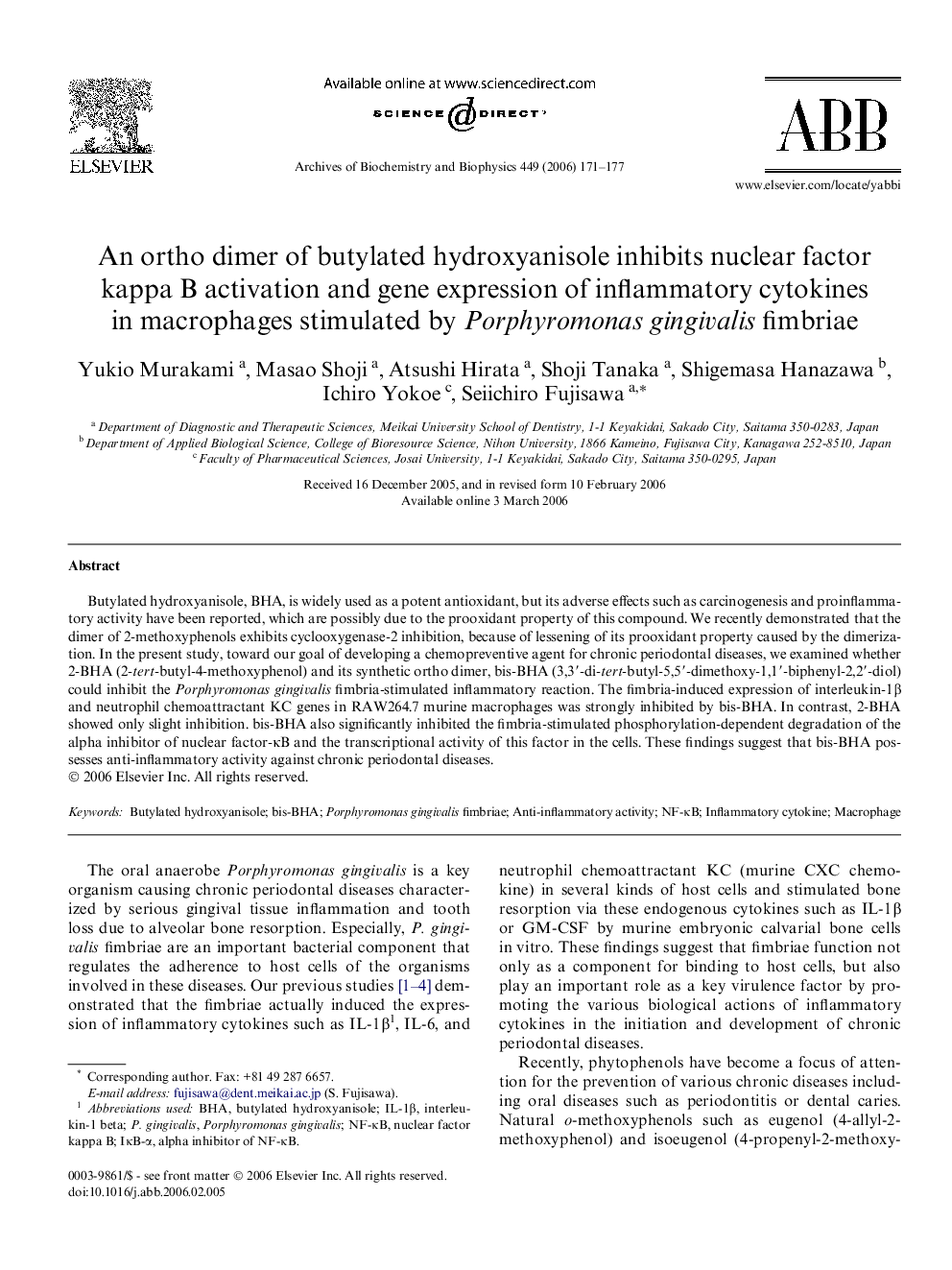| Article ID | Journal | Published Year | Pages | File Type |
|---|---|---|---|---|
| 1927544 | Archives of Biochemistry and Biophysics | 2006 | 7 Pages |
Butylated hydroxyanisole, BHA, is widely used as a potent antioxidant, but its adverse effects such as carcinogenesis and proinflammatory activity have been reported, which are possibly due to the prooxidant property of this compound. We recently demonstrated that the dimer of 2-methoxyphenols exhibits cyclooxygenase-2 inhibition, because of lessening of its prooxidant property caused by the dimerization. In the present study, toward our goal of developing a chemopreventive agent for chronic periodontal diseases, we examined whether 2-BHA (2-tert-butyl-4-methoxyphenol) and its synthetic ortho dimer, bis-BHA (3,3′-di-tert-butyl-5,5′-dimethoxy-1,1′-biphenyl-2,2′-diol) could inhibit the Porphyromonas gingivalis fimbria-stimulated inflammatory reaction. The fimbria-induced expression of interleukin-1β and neutrophil chemoattractant KC genes in RAW264.7 murine macrophages was strongly inhibited by bis-BHA. In contrast, 2-BHA showed only slight inhibition. bis-BHA also significantly inhibited the fimbria-stimulated phosphorylation-dependent degradation of the alpha inhibitor of nuclear factor-κB and the transcriptional activity of this factor in the cells. These findings suggest that bis-BHA possesses anti-inflammatory activity against chronic periodontal diseases.
